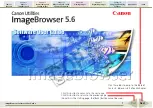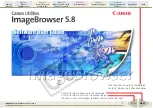
3 Starting out with VirtualBox
In addition, the
“Enable PAE/NX”
setting determines whether the PAE and NX capa-
bilities of the host CPU will be exposed to the virtual machine. PAE stands for “Physical
Address Extension”. Normally, if enabled and supported by the operating system, then
even a 32-bit x86 CPU can access more than 4 GB of RAM. This is made possible by
adding another 4 bits to memory addresses, so that with 36 bits, up to 64 GB can be
addressed. Some operating systems (such as Ubuntu Server) require PAE support from
the CPU and cannot be run in a virtual machine without it.
3.7.2.3 “Acceleration” tab
On this page, you can determine whether VirtualBox should make use of hardware
virtualization; see chapter
1.2
,
Software vs. hardware virtualization (VT-x and AMD-V)
,
page
11
for an introduction.
The
“Enable VT-x/AMD-V”
setting determines whether the virtualization engine
will try to use the host CPU’s hardware virtualization extensions such as Intel VT-x
and AMD-V. For 64-bit guest operating systems, SMP and for some rather exotic guest
operating systems such as OS/2, this setting needs to be enabled.
Starting with VirtualBox 2.2, this setting is enabled by default for newly created
machines.
Nested paging
is not enabled automatically when you enable hardware virtualiza-
tion; you can enable it separately once you have enabled hardware virtualization.
Note:
You can mix software and hardware virtualization when running mul-
tiple VMs. In certain cases a small performance penalty will be unavoidable
when mixing VT-x and software virtualization VMs. We recommend not mix-
ing virtualization modes if maximum performance and low overhead are es-
sential. This does
not
apply to AMD-V.
3.7.3 Display settings
Video memory size
This sets the size of the memory provided by the virtual graph-
ics card available to the guest, in MB. As with the main memory, the specified
amount will be allocated from the host’s resident memory. Based on the amount
of video memory, higher resolutions and color depths may be available.
Enable 3D acceleration
If the virtual machine has Guest Additions installed, you can
select here whether the guest should support accelerated 3D graphics. Please
refer to chapter
4.8
,
Hardware 3D acceleration (OpenGL and DirectX 8/9)
, page
71
for details.
Remote display
Under the “Remote display” tab, you can enable the VRDP server
that is built into VirtualBox to allow you to connect to the virtual machine re-
motely. For this, you can use any standard RDP viewer, such as the one that
49
















































